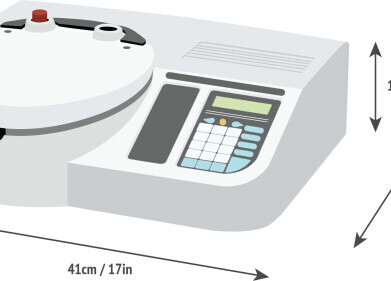-
 Pectin is found in a wide range of natural sources
Pectin is found in a wide range of natural sources
Chromatography
A fruitful approach to polysaccharide characterization… CP Kelco reveals how GPC/SEC supports its manufacture of high performance biopolymers
Sep 14 2015
Insight from CP Kelco, a global leader in the specialty hydrocolloids market, provides a blueprint for the intelligent, cost-efficient deployment of gel permeation/size exclusion chromatography (GPC/SEC) in biopolymer manufacture. Using GPC/SEC systems from Malvern Instruments, the company has established analytical strategies that ensure consistent, high performance pectin and carrageenan grades from a wide range of different natural sources.
“Unfortunately not even all oranges are the same,” said Jan Larsen, Principal Scientist, CP Kelco “Since we extract biopolymers from a variety of citrus fruits and from seaweed, we face the task of dealing with multiple and variable feedstocks. An essential element of R&D is to efficiently identify optimal extraction conditions for each new feed so as to deliver a highly consistent product that can be used with confidence across the food, drink and pharmaceutical industries.”
“We exploit the full capabilities of the Viscotek tetra-detector GPC/SEC system to look at molecular weight (MW) distribution, structure or ‘branchiness’, intrinsic viscosity (IV), and to detect any unwanted chemical impurities.”
The pectin and carrageenan products made by CP Kelco are complex mixtures of copolymers, as in nature, and present a considerable challenge in terms of characterization and consistent product quality. The Viscotek tetra-detector array incorporates a refractive index concentration detector, a light scattering detector for absolute MW measurement, a viscometer for IV measurement and a UV detector for chemical identification. Each GPC/SEC analysis therefore provides extensive and detailed information about the product that is directly relevant to performance. These data are used to optimize the extraction conditions applied to any given feedstock.
“During processing, both locally and at other sites across the globe, we switch to an ‘abbreviated’ form of GPC/SEC called flow injection polymer analysis (FIPA),” said Jan Larsen. “This is not as informative as ‘standard’ GPC/SEC but measurements are much faster, making it very useful for extraction control. FIPA provides averaged values of MW and IV in around ten minutes, so we can quickly check that the extraction is proceeding as it should.”
FIPA can be implemented on a Viscotek system simply by changing to a different separation column. It provides averaged rather than distributed values for the sample because the column performs a much simpler separation of the bulk polymer from any impurities or low molecular weight material. This means that measurement is relatively quick. Using the FIPA and ‘standard’ GPC/SEC in tandem is, therefore, a beneficial strategy for optimizing the cost-efficiency of the technique within the manufacturing environment.
Digital Edition
Lab Asia Dec 2025
December 2025
Chromatography Articles- Cutting-edge sample preparation tools help laboratories to stay ahead of the curveMass Spectrometry & Spectroscopy Articles- Unlocking the complexity of metabolomics: Pushi...
View all digital editions
Events
Jan 21 2026 Tokyo, Japan
Jan 28 2026 Tokyo, Japan
Jan 29 2026 New Delhi, India
Feb 07 2026 Boston, MA, USA
Asia Pharma Expo/Asia Lab Expo
Feb 12 2026 Dhaka, Bangladesh


















